Where to go in winter in Australia
Leave the big chill behind at these destinations in warmer climes.
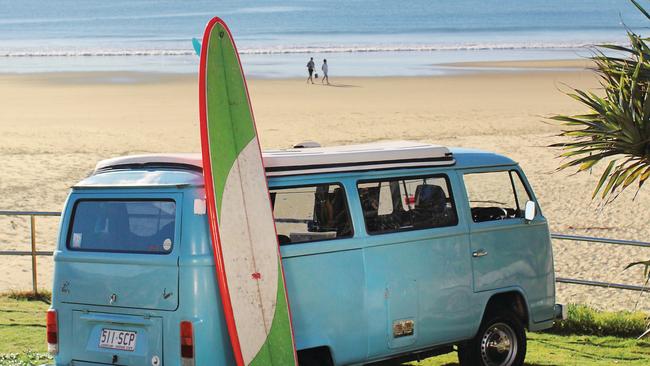
Queensland
Sunshine Coast
A region with such a confident name is a magnet for migrating southerners during colder months. It doesn’t matter if there’s a breeze ruffling the cappuccino foam at alfresco cafes along Noosa’s Hastings Street strip. It’s the 21C water temps in winter and perpetual feel of holiday that make the “Sunny Coast” such a drawcard. It’s not all about the sea, however. The hinterland towns of Montville and Maleny offer chic shopping, patisserie shops and gelato bars, botanical walks and rainforest-fringed waterfalls. There’s even a winery at Montville, Flame Hill Vineyard, with temperate climate plantings. Picnic in the vines, anyone? Back by the coast, dip or paddle at Noosa Main Beach, Coolum, Mudjimba or Mooloolaba; take a boat tour from Noosaville, have a round of golf. Then there’s the joy of spotting humpback whales on their annual migration north. Leviathans have always known a thing or two about spending winter in warmer climes.
Stay Element on Coolum Beach Resort
SUSAN KUROSAWA
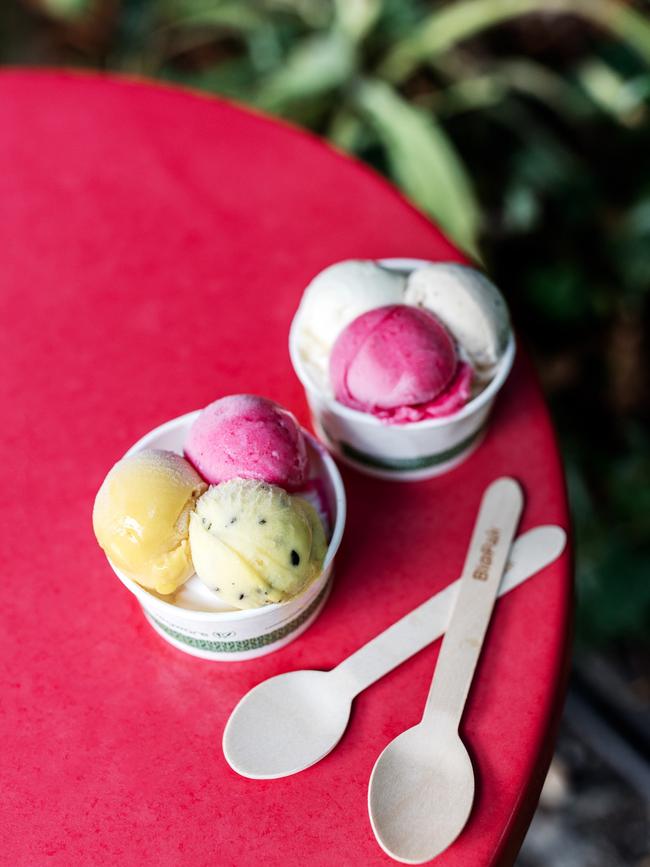
Daintree rainforest
It’s part of the magic that you have to take a car ferry to enter this tropical rainforest, the world’s oldest. The Daintree’s neighbour is the Great Barrier Reef and, even in July, you might be tempted to take a dip. Don’t. A local will likely warn you that “only the other week” a little dog walking on the beach with its human was taken by a saltwater crocodile. Instead, Ocean Safari will zoom you out from Cape Tribulation to the reef for splendid snorkelling with green sea turtles (winter is outside stinger season). Or take a relaxed bird- and croc-spotting cruise with the Daintree Boatman, on the southern side of the river. Keep cool at the Daintree Ice Cream Company, set in the exotic orchard that supplies the fruits for its yummy creations. Bask in the glorious racket of the dawn chorus, the lush walks, the thrill of spying a cassowary (the other prehistoric resident that could kill you if you get too close).
Stay Daintree Ecolodge
JANE NICHOLLS
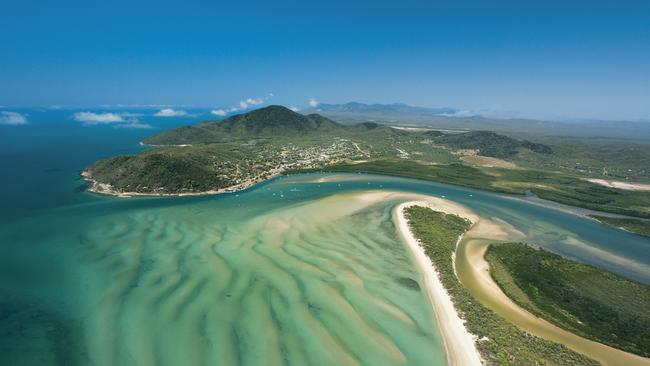
Cooktown
If not exactly “undiscovered”, Cooktown is an unhurried tropical destination. A four-hour drive north of Cairns, the town has winter temperatures ranging from 20-25C and a humidity level that doesn’t scream instant aircon. Cooktown is big on history, claiming to be Australia’s first European settlement and home to the Guugu Yimithirr people for thousands of years before that. Captain James Cook set up camp for 48 days in 1770 while he and his crew repaired the Endeavour, which had foundered on the reef. A waterfront park has landing steps and statues aplenty to capture the moment, but James Cook Museum, in a 19th-century convent, is a must-visit; it records Indigenous history and discovery of gold at Palmer River in 1873, with the arrival of Chinese immigrants. The town thrived and 65 pub licences were issued. After a walk in the splendid Botanic Gardens, settle in for a beer and barra at a survivor, the weatherboard “top end” Cooktown Hotel.
Stay Sovereign Resort Hotel
GRAHAM ERBACHER
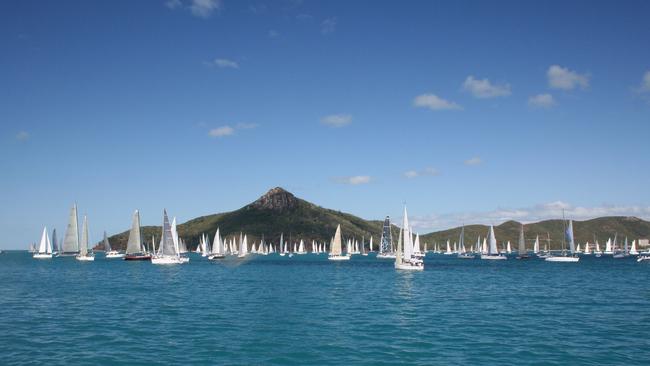
Hamilton Island
Hamilton Island never fails to impress, regardless of season, but it’s particularly pretty over the winter months when humidity drops, migrating whales reach their peak, and yachts sweep over the Coral Sea for Race Week (August 21-28), the country’s leading keelboat regatta. The car-free island (the largest in the Whitsundays archipelago) can be explored on foot, on quad bikes or in golf buggies, zipping through bushland where koalas, kangaroos and kookaburras thrive, and up to Passage Peak for views over seemingly endless swaths of opalesque sea. It’s tempting to linger over cocktails at the legendary One Tree Hill bar or in your private infinity pool at exclusive Qualia resort; however, Hamilton is also a gateway to one of the world’s greatest World Heritage sites. Strap on your mask and fins, and dive into the warm waters of the Great Barrier Reef.
Stay Qualia
NATASHA DRAGUN
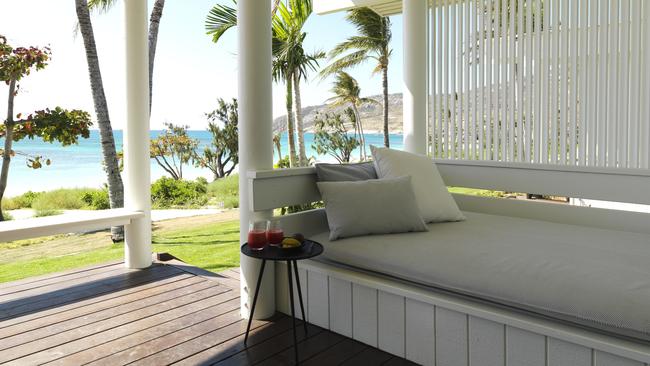
Lizard Island
“If the mood takes” is the only motivation that matters on Lizard Island, the northernmost resort of the Great Barrier Reef. With only 40 suites and villas, it ticks the boxes of luxury and seclusion, and, at this time of year, sunny skies. Laze on a suite’s deck, perhaps watched from the tropical garden by one of the (harmless) yellow-spotted monitors after which Captain Cook named the island. Across the lawn, Anchor Bay promises a refreshing dip, and snorkelling delights await in coral and clam gardens accessible from the beach. For adventurous divers, trips to the outer reef are on offer. Expect the freshest of produce in Salt Water restaurant with its fab views and wine list to match. Lizard Island is a 1000ha national park, with marine research station, so there are walks to explore, say, the Blue Lagoon or, for the energetic, Cook’s Look. As the south shivers, how about a dinghy ride to a private beach with delectable picnic hamper and sunset champers?
Stay The resort is the only guest accommodation.
tropicalnorthqueensland.org.au
GRAHAM ERBACHER
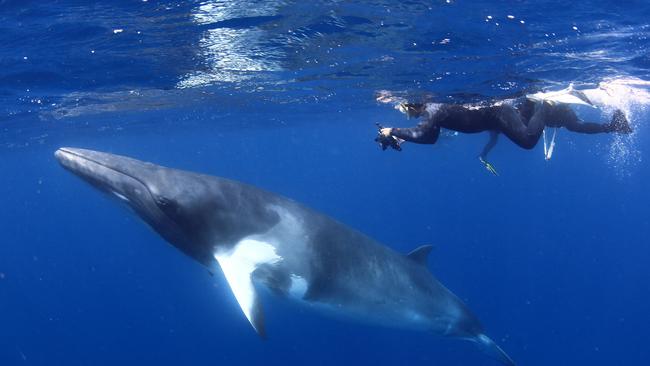
Cairns
With the right timing, a winter sojourn in Cairns brings the chance to see dwarf minke whales at close quarters. This fascinating, lesser-known species gathers in large pods to migrate south along the east coast every June and July. The Great Barrier Reef is one of the best places on Earth to see them. Dwarf minkes’ vocalisations are audible to humans, and their markings are as unique as fingerprints. Three tour operators (Diver Den, Pro-Dive Cairns and Mike Ball Dive Expeditions) sail out of Cairns to minke territory on the remote 120km Ribbon Reefs that fringe the edge of the continental shelf. It’s far enough from the coast for a three-night stay, and each liveaboard allows divers and snorkellers to frolic alongside the notoriously inquisitive minkes. Although small compared with the giants of the whale world, 2m-long minke calves will grow into hefty 6000kg, 8m adults, which makes them large enough to astonish swimmers, yet small enough to feel safe around. With balmy temperatures of 25C and spectacular coral to snorkel over, this excursion is Australia’s great unsung animal encounter of the wintry kind.
Stay Riley hotel
CLEO GLYDE
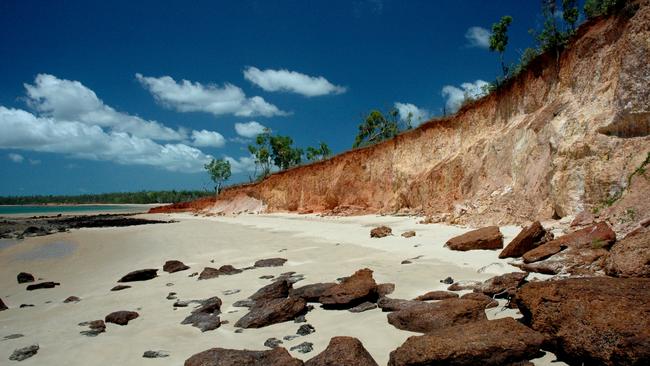
Northern Territory
Cobourg Peninsula
Almost as far north as mainland Australia reaches, the Cobourg Peninsula is nature writ large. The entire slip of land, fringed by dozens of coves and bays, is encompassed by Arnhem Land’s Garig Gunak Barlu National Park, spanning 2260sq km but with a permanent population of just 30. This means you’ll likely have the dizzyingly white beaches, mangroves, bird-rich wetlands and rainforest to yourself – along with the world’s largest herd of banteng, endangered wild cattle originally from Southeast Asia. Beckoning offshore is the marine park in the surrounding Arafura Sea and Van Diemen Gulf, home to dugong, dolphins, manta-rays and six of the world’s seven marine turtle species. Roads into this part of the country are open only during the dry season (May to September). Daytime diversions include bush tucker and mud-crabbing tours with an Indigenous guide, and visits to the eerie ruins of the failed Victoria Settlement from the 1800s.
Stay Chic eco-lodge Seven Spirit Bay is the only option for non-campers.
NATASHA DRAGUN
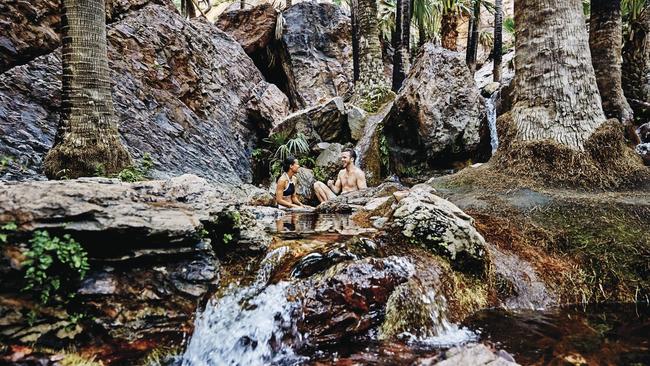
Western Australia
Zebedee Springs
Not all hot springs are created equal. The East Kimberley, for instance, is home to one so photogenic you might think it was dreamed up by a team of Disney Imagineers. Zebedee Springs is tucked into the sprawling 283,000ha El Questro Wilderness Park, 110km from Kununurra. If you’re lucky enough to secure a stay at The Homestead, the park’s top-tier accommodation, enjoy an exclusive afternoon wallow in the warm thermal waters. Other park guests visit in the morning to loll in the perfect pools shaded by rare Livistona palms and pandanus. Find a submerged rock to sit on or relax against the palms’ spongy root system. Beyond this improbable oasis are cliffs that glow red when the sun drops in the raincloud-free sky — a hallmark of the Kimberley dry season.
Stay El Questro or, if day-tripping from Kununurra, Freshwater East Kimberley Apartments.
KATRINA LOBLEY
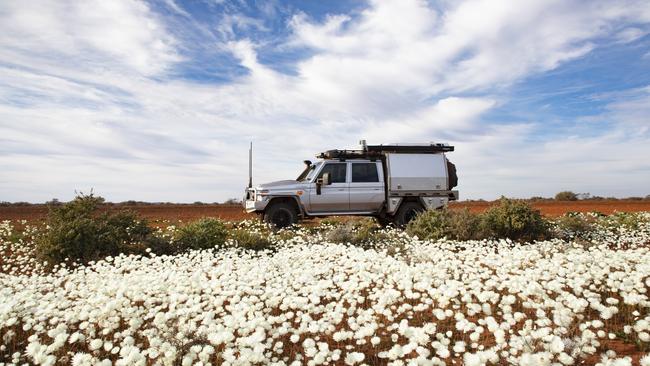
Geraldton
Come late winter, Geraldton, in WA’s Midwest, rolls out the welcome carpet with fields of everlastings wildflowers in wonderfully warm pinks, yellows and whites. Meanwhile, across the bay, whales are weaving their way past the Abrolhos Islands, on their annual migration. Spot some on a day-long cruise to the archipelago, comprising 122 islands 60km off the coast. Abrolhos Adventures conducts history tours on its fast new catamaran hosted by Howard Gray, who details shipwrecks and points out marine and birdlife. Or see it all by air with Shine Aviation, which also zooms over the bubblegum-pink lake known as Hutt Lagoon. Back on land, there are galleries and street art to check out, and the HMAS Sydney II Memorial honouring sailors lost off the WA coast during World War II. Expect sunny days above 20C, perfect for exploring.
Stay The Gerald
ANDREA BLACK
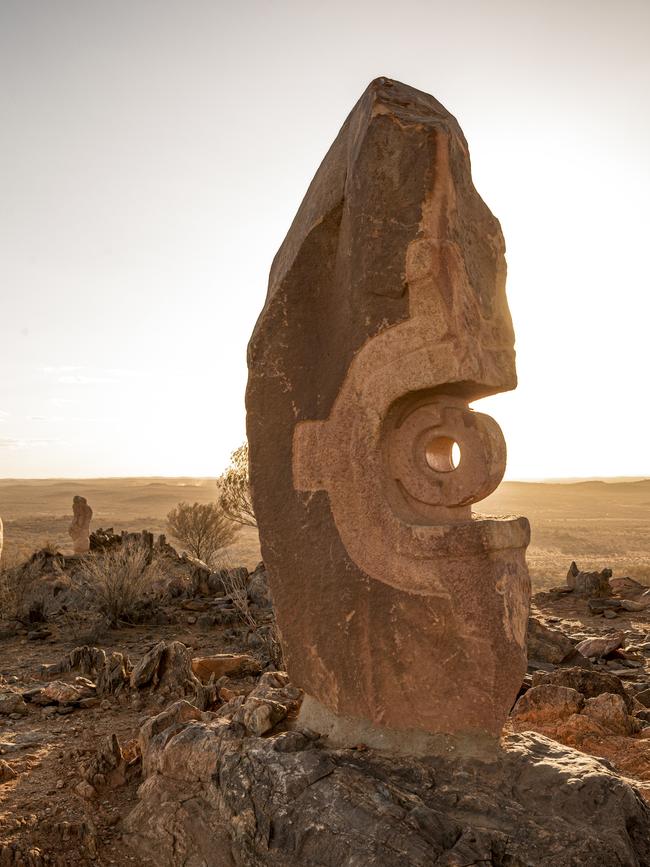
NSW
Broken Hill
Summer in this outback outpost can wilt the hardiest of travellers. In winter, though, the Silver City is a delight, albeit a little crisp at night. There’s a long list of things to see and do but a good start is to watch the sunset from among the sculptures at the Living Desert Reserve 12km north of town (BYO celebratory drinks). Visit the Line of Lode’s angular miners’ memorial and chat to former miner turned artist John Dynon at his quirky studio in Silverton, also home to the Mad Max 2 Museum and Mundi Mundi Lookout. Wear warm layers to stargaze during Outback Astronomy’s Sky Show and day-trip southeast to Lake Menindee, which this winter offers rare aquatic views after floodwaters recently reached it for the first time in five years.
Stay Broken Hill Outback Church Stay, a restored Romanesque church.
brokenhilloutbackchurchstay.com
KATRINA LOBLEY
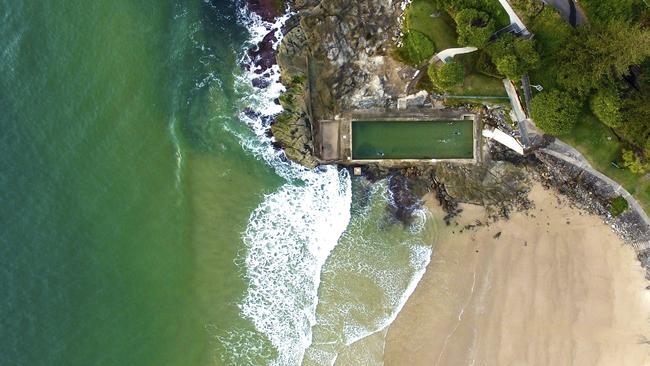
Yamba
Swimming in NSW’s ocean pools during winter is generally only for the brave but at the baths in Yamba, it’s easy. The sun hits the water just after lunch, so slide in and loll back to bask in the rays. This north coast town, with 11 beaches in the vicinity, is perfect for sandy wanderings and hikes along the river to meet the resident pelicans. Nights are spent feasting on prawns freshly plucked from the Clarence River. Unlike surrounding billionaire lairs, Yamba still has that old surf-town charm, with 1950s beach shacks, low-slung motels, and the Pacific Hotel, which has views across neighbouring bays. When the art deco-style pub opened in 1934, it was lauded as “the most perfectly appointed place of all seaside resorts north of Sydney”. Eighty-seven years later, the post-swim afternoon outlook from inside the warm pub, fringed by pandanus and Norfolk pines, is just as grand.
Stay Pacific Hotel Yamba
ANDREA BLACK



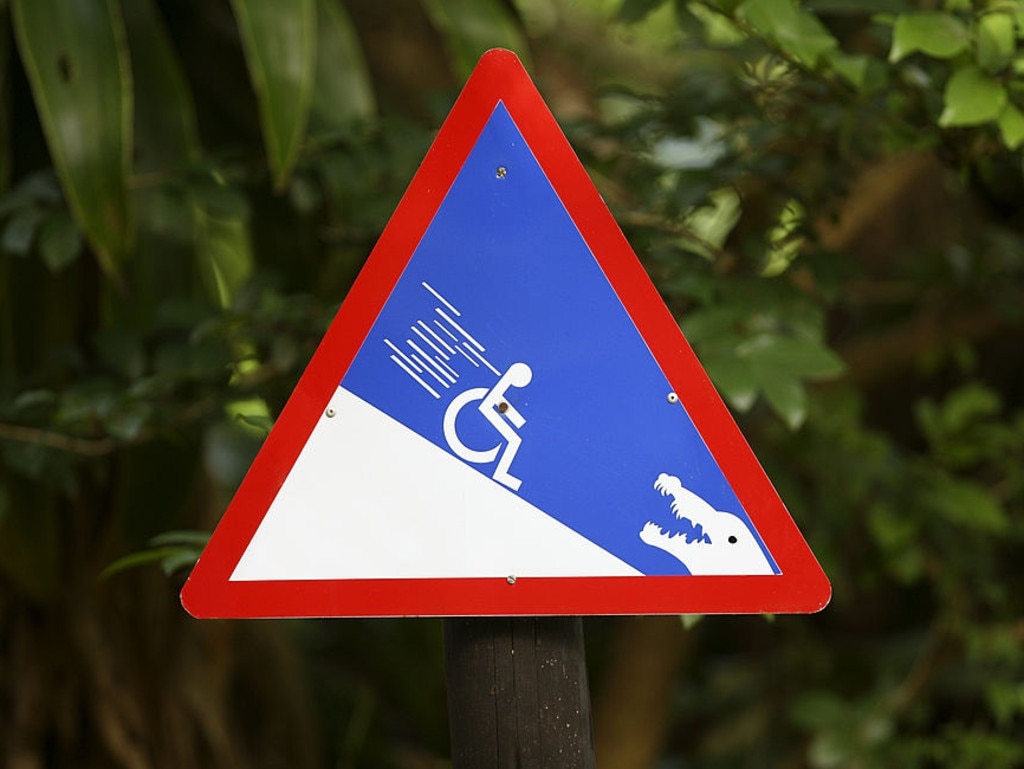

To join the conversation, please log in. Don't have an account? Register
Join the conversation, you are commenting as Logout